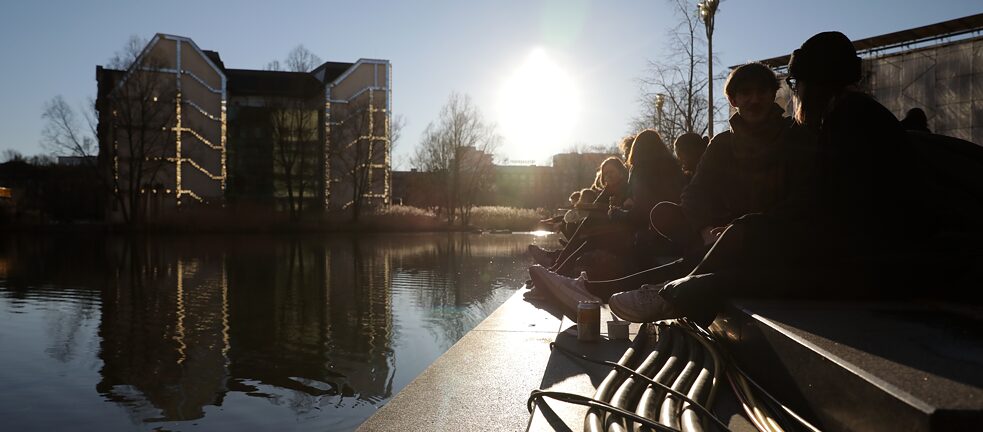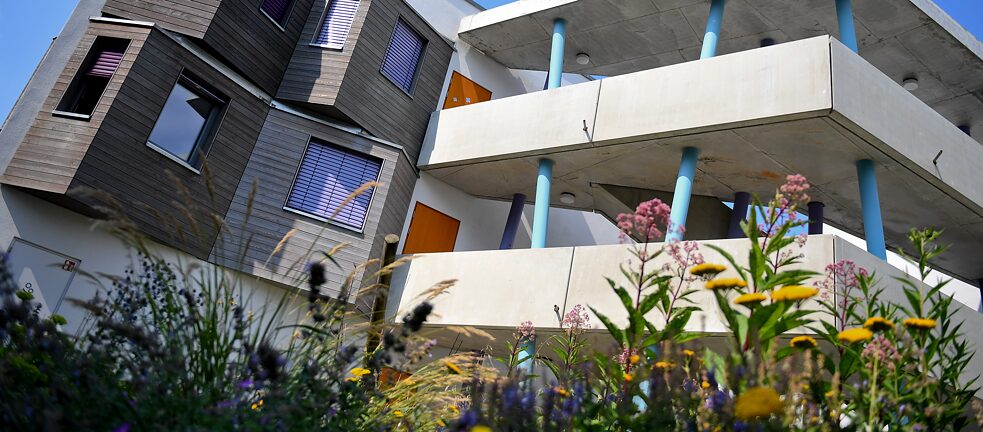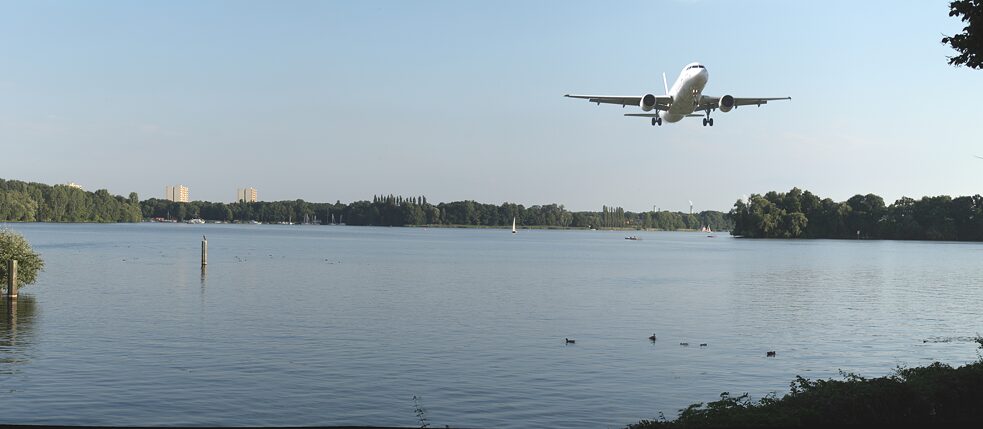Water Management
Rain has become a highly sought-after commodity

Berlin wants to become a “sponge city” – not a single raindrop is to be wasted. This makes the capital a pioneer in Germany when it comes to the sustainable use of rainwater.
By Wolfgang Mulke
The reeds round the edge of the small Piano Lake, bathed in autumn colours, gently sway back and forth in the wind and there is water cascading over rocks in an artificial river bed. The small idyll is deceptive, belying the fact that you are right in the heart of Berlin – on Potsdamer Platz, where land and property is so expensive that there is usually no place left for nature. However, when developing the area, the planners had to bow to a requirement that applies to all new buildings in the German capital today – rainwater must be collected and must not enter the sewerage system, canals or rivers. “Sponge City Berlin” is the name of the project that has been implemented throughout the city for several years.
“Eight years ago people finally realised that things couldn’t go on the way they were going,” explains Stephan Natz, spokesman for the local water company. Up to that point, Berlin had not yet adjusted to the changes in climatic conditions. It was not a case of more rain falling, but more that the rain was much heavier. Heavy rain swamped the old sewerage system more and more often – with serious consequences. Flooded streets being just one of them.
A deadly abundance
Like most large cities, Berlin has a mixed sewerage system in its centre. In the event of heavy rainfall, the rainwater flows together with the service water via drains. If these channels overflow, the untreated sludge runs into the nearest canal or river. One consequence is a regular die-off of fish, because add-ons such as pollen remove oxygen from the water. On the outskirts of the city, the wastewater is in fact separated, but here, too, if the volume of rainwater is too large, overflow channels divert it into surrounding bodies of water.
The aim is for the “sponge city” to put an end to this environmental pollution by literally sucking up the excess water. The effort involved is considerable. Under Potsdamer Platz, for example, the rainwater is stored in underground cisterns, because the Piano Lake must not get too deep, and is used to irrigate green roofs or lawns in the surrounding area. This also has an effect on the urban climate as a whole. “It has a balancing effect on temperature, humidity and dust generation,” explain the initiators.
From the shower to the fish farm
A few hundred metres further away is “Block 6” in the Kreuzberg district. There, scientists from the Technical University are testing how, in addition to rainwater, so-called “grey water”, i.e. wastewater from showering or washing up, can be treated and used for food production. 250 households channel their grey water into a pond in the middle of the block, in which plants clean the wastewater. In addition, the researchers breed plants and fish with the nutrient-rich, but of course already purified, water.
 There are no more drains on the Science Campus – instead, infiltration ditches, green roofs and house facades ensure that rainwater is properly run off and purified.
| Photo (detail): © picture alliance/Britta Pedersen/dpa-Zentralbild/ZB/Britta Pedersen
Entire districts in Berlin are now being designed and built in such a way that every drop of rainwater can be reused. In the Adlershof Science Campus, as in the Karow Nord residential area, there are no longer any drains. Rain is stored or used immediately for green areas on roofs or between the buildings. The new city district planned to be built on the site of the former Tegel Airport will also implement extensive rainwater management.
There are no more drains on the Science Campus – instead, infiltration ditches, green roofs and house facades ensure that rainwater is properly run off and purified.
| Photo (detail): © picture alliance/Britta Pedersen/dpa-Zentralbild/ZB/Britta Pedersen
Entire districts in Berlin are now being designed and built in such a way that every drop of rainwater can be reused. In the Adlershof Science Campus, as in the Karow Nord residential area, there are no longer any drains. Rain is stored or used immediately for green areas on roofs or between the buildings. The new city district planned to be built on the site of the former Tegel Airport will also implement extensive rainwater management.
Giant reservoirs underground
The water companies are also creating storage facilities both above and below ground. There is a new football field, but what passers-by hardly notice is that the pitch is 30 centimetres below the ground surface in order to collect rainwater if necessary. Meanwhile, at another location they have built an underground storage tank which can hold 300,000 cubic meters of water. That corresponds to a cube with an edge length of a good 67 metres. “Berlin is at the forefront in Germany on this topic,” says Natz. “Every raindrop that does not flow into the canal is a good raindrop.”
The situation, however, is not quite that rosy. The rainwater management agency implementing the concept has only five employees working on the project – somewhat meagre for a city with over three millions inhabitants. In addition – the legal requirements to build rainwater-friendly buildings only apply to part of the building industry, and there, too, cisterns compete with “valuable” underground parking space. For existing buildings, there is still a complete lack of a know-how on how to make sustainable use of rainwater. “We are still looking for solutions,” admits spokesman Natz. That is why it is still going to take some time before the sponge completely absorbs the increasingly precious rainwater and uses it in an ecologically sensible way.
 A plane takes off over Lake Tegel. Extensive rainwater management is planned for the new urban district, which is to be built on the site of the former Tegel Airport.
| Photo (detail): © Adobe
A plane takes off over Lake Tegel. Extensive rainwater management is planned for the new urban district, which is to be built on the site of the former Tegel Airport.
| Photo (detail): © Adobe